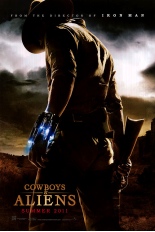
 Cowboy (Daniel Craig). Cowboys. Cowboys. Pow-pow-pow! Cowboys. Hot Indian (Olivia Wilde). Cowboys. Cowboy (Harrison Ford). Cowboys. Cowboys. Aliens! Pow-pow-pow! Zap-zap-zap! Aliens! Zap-zap-zap! Cowboys. Cowboys. Cowboys. Aliens! Pow-pow-pow! Zap-zap-zap!
Cowboy (Daniel Craig). Cowboys. Cowboys. Pow-pow-pow! Cowboys. Hot Indian (Olivia Wilde). Cowboys. Cowboy (Harrison Ford). Cowboys. Cowboys. Aliens! Pow-pow-pow! Zap-zap-zap! Aliens! Zap-zap-zap! Cowboys. Cowboys. Cowboys. Aliens! Pow-pow-pow! Zap-zap-zap!
Cowboys. Cowboys. Cowboys. Pow-pow-pow! Cowboys. Cowboys. Cowboys. Cowboys. Aliens! Zap-zap-zap! Zap-zap-zap! Splash! Aliens! Cowboys. Cowboys. Indians! Cowboys. Aliens. Cowboys. Aliens. Cowboys.
 Cowboys. Cowboys. Aliens. Cowboys. Indians. Cowboys. Cowboys. Dynamite. Kaboom! Aliens! Zap-zap-zap! Zap-zap-zap! Aliens! Dead horses. Zap-zap-zap! Cowboys. Aliens! Zap-zap-zap! Zap-zap-zap! Pow! Cowboys. Cowboys. Indians. Aliens! Pow-pow-pow! Cowboys. Aliens! Aliens! Holy shit, aliens! Zap-zap-zap! Zap-zap-zap! Zap-zap-zap! Zap-zap-zap! Blast off! KA-BLOOEY!
Cowboys. Cowboys. Aliens. Cowboys. Indians. Cowboys. Cowboys. Dynamite. Kaboom! Aliens! Zap-zap-zap! Zap-zap-zap! Aliens! Dead horses. Zap-zap-zap! Cowboys. Aliens! Zap-zap-zap! Zap-zap-zap! Pow! Cowboys. Cowboys. Indians. Aliens! Pow-pow-pow! Cowboys. Aliens! Aliens! Holy shit, aliens! Zap-zap-zap! Zap-zap-zap! Zap-zap-zap! Zap-zap-zap! Blast off! KA-BLOOEY!
Cowboys. Boredom. —Rod Lott

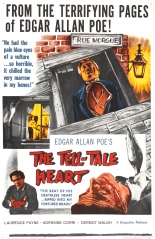
 A good (albeit loose) adaptation of Edgar Allan Poe’s
A good (albeit loose) adaptation of Edgar Allan Poe’s 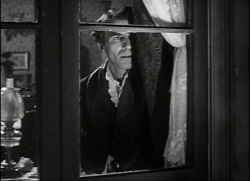 Whether you’ve read the original story or not, you know how it goes from there, and that’s why the movie holds no suspense. But it’s made well, in a crisp, buttoned-up, British style, co-written by Brian Clemens, who brought equal class to so many
Whether you’ve read the original story or not, you know how it goes from there, and that’s why the movie holds no suspense. But it’s made well, in a crisp, buttoned-up, British style, co-written by Brian Clemens, who brought equal class to so many 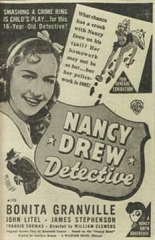
 In her first screen outing,
In her first screen outing, 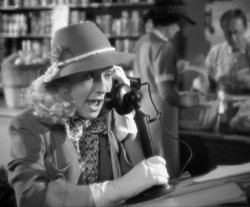 In the climax, Nancy threatens the bad guys with a gun, holding it with disgust as if it were a penis.
In the climax, Nancy threatens the bad guys with a gun, holding it with disgust as if it were a penis. 
 Who is killing all of London’s drunken bums dressed as Santa Claus? Whoever it is is wildly inconsistent in his methods, using a straight razor, a garrote, a spear and even a broken beer bottle, all the better to gouge Kris Kringle’s eye with. The result is
Who is killing all of London’s drunken bums dressed as Santa Claus? Whoever it is is wildly inconsistent in his methods, using a straight razor, a garrote, a spear and even a broken beer bottle, all the better to gouge Kris Kringle’s eye with. The result is 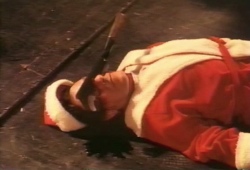 Scream queen Caroline Munro appears in one scene as herself, singing a synthy-sweet pop number onstage while caressing her inviting curves in a slinky, sequined red dress that sparkles as bright as her bedroom eyes. (Er, please excuse me for a couple of minutes. … Okay, I’m back.)
Scream queen Caroline Munro appears in one scene as herself, singing a synthy-sweet pop number onstage while caressing her inviting curves in a slinky, sequined red dress that sparkles as bright as her bedroom eyes. (Er, please excuse me for a couple of minutes. … Okay, I’m back.) 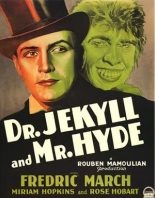
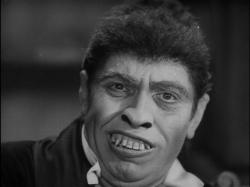 The best thing about this version is Rouben Mamoulian’s direction, which looks innovative even today through his unique use of subjective camera, split-screens and framing of certain shots. It’s way ahead of its time. The film kind of peters out in the last half-hour and I’m bothered by the way everyone pronounces the doc’s name as “JEEK-ul,” but this is still a great old horror movie through and through. —Rod Lott
The best thing about this version is Rouben Mamoulian’s direction, which looks innovative even today through his unique use of subjective camera, split-screens and framing of certain shots. It’s way ahead of its time. The film kind of peters out in the last half-hour and I’m bothered by the way everyone pronounces the doc’s name as “JEEK-ul,” but this is still a great old horror movie through and through. —Rod Lott